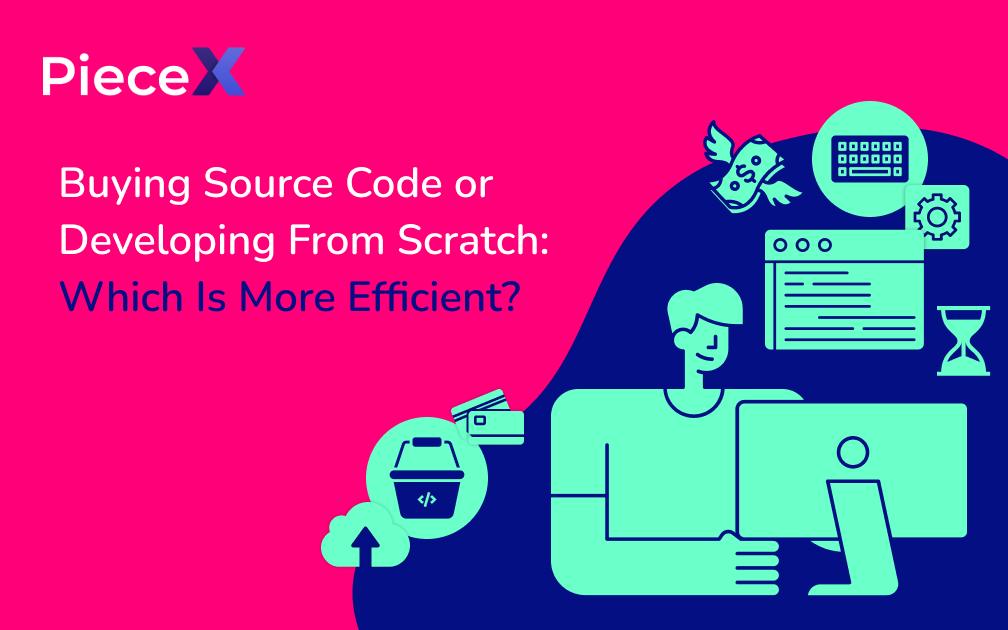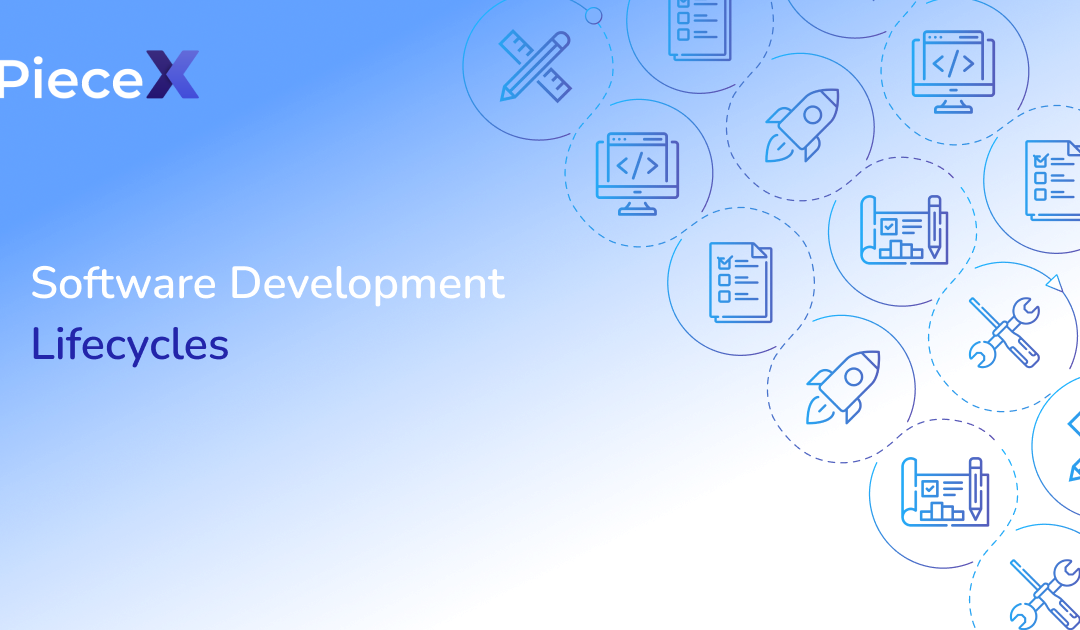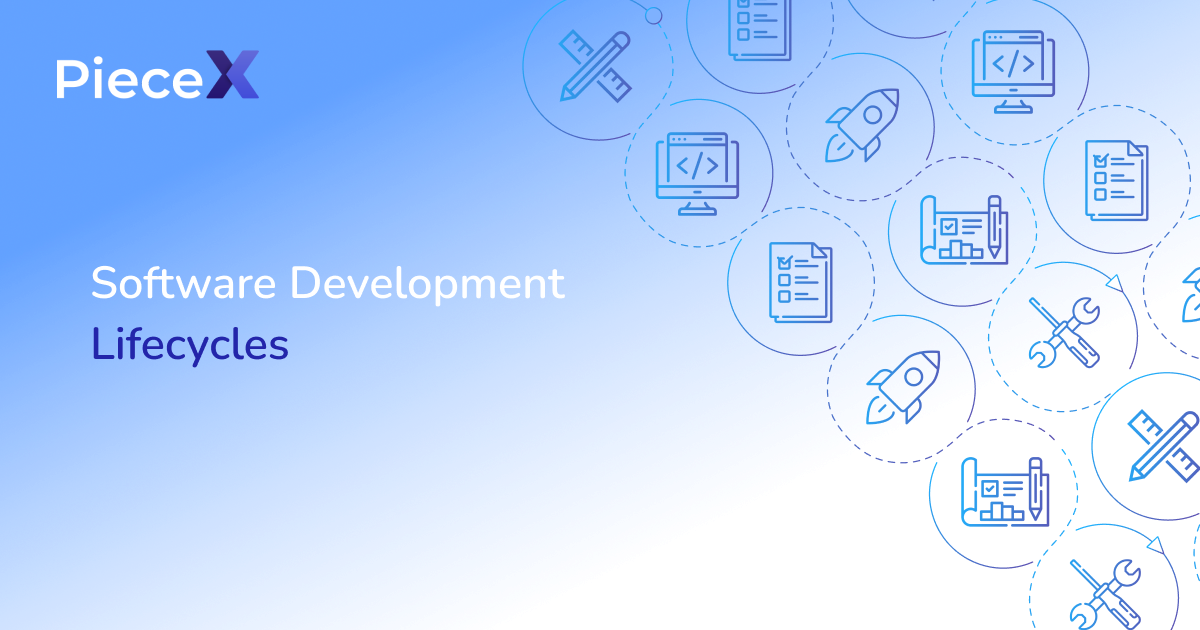
Buying Source Code or Developing From Scratch: Which Is More Efficient?

In the fast-paced world of software development, a hot debate rages on: should you build your software from the ground up or take a shortcut by purchasing existing source code? Today, we’re diving into this discussion and making a clear case for why buying source code might just be the efficiency boost your project needs.
Advantages of Buying Source Code
Imagine this: you have a brilliant idea for a new app or website, and you’re raring to get it out into the world. Buying source code can give you a head start that’s hard to ignore.
Time Savings
Have you heard of launching your project in just five days? It’s not a pipe dream anymore, especially if you explore platforms like PieceX. When you purchase source code, you’re not starting from scratch, which means you can skip the months of coding and testing. That’s precious time saved that you can use to refine your concept and engage with your audience sooner.
Cost-Effectiveness
Budget concerns often weigh heavily on software projects. Buying source code can be a cost-effective strategy. Think about it: the expenses of hiring developers, designing UI/UX, and ensuring functionality can add up fast. With source code, a significant portion of these costs is already covered, leaving more room in your budget for marketing and further development.
Access to Advanced Features
Modern software demands cutting-edge features to stand out in the market. Buying source code can give you instant access to these advanced functionalities. Instead of investing time and effort into developing these features, you can integrate them seamlessly and focus on refining the user experience.
Ease of Access on Platforms
Platforms like PieceX have simplified the process of buying and selling source code. With a few clicks, you can explore a marketplace of codebases, ready to turbocharge your project. It’s like a digital toolbox full of shortcuts to success.
Examples of Successful Projects
Let’s talk success stories. From mobile apps to intricate websites, the success of projects built on purchased code speaks volumes.
Mobile Apps
Ever wonder how certain apps hit the market so quickly? Many owe their speed to purchased source code. They’re able to bypass the time-consuming coding phase, and instead, they focus on refining the user experience and marketing.
Websites and Platforms
In the competitive world of e-commerce and online platforms, rapid deployment can be a game-changer. By purchasing existing code, you can dive straight into customization and optimization, leaving your competitors in the dust.
Games and Applications
The gaming industry thrives on innovation, but building game engines from scratch can be painstaking. Source code purchasing allows developers to focus on crafting unique gameplay experiences rather than wrestling with backend complexities.
Fully Scalable Enterprise Projects
It’s not just small projects that benefit. Even large-scale enterprise solutions can harness the power of pre-built source code. Scaling up becomes a breeze when you’re not bogged down by foundational coding.
Overcoming Challenges in Buying Source Code
It’s true, challenges can arise when purchasing source code, but they’re not insurmountable.
Ensuring Code Quality and Security
Platforms like PieceX step in here. They rigorously inspect all listed source code to ensure it meets market standards. This vetting process safeguards against poor-quality or insecure code.
Customization and Adaptation
Worried about cookie-cutter solutions? Fear not. Most source code can be tailored to fit your project’s unique needs. You can even request customization from sellers, transforming the code into a perfect fit.
Integration and Compatibility
Yes, integration can be a puzzle, but it’s solvable. By carefully evaluating the compatibility of purchased code with your existing systems, you can avoid unnecessary roadblocks.
Strategic Use of Purchased Code
Simply buying source code is just the beginning. Strategic implementation is the key to maximizing its potential.
Tailoring the Codebase
Don’t just settle for a one-size-fits-all solution. Tailor the code to your project’s requirements. Remove excess features, optimize for performance, and make it truly yours.
Collaborating with Experts
Collaboration fuels innovation. Engage with experts who are familiar with the purchased code. Their insights can help you unlock the full potential of the source code.
Leveraging Community Support
Online marketplaces like PieceX not only offer code but also a community. Connect with other developers who’ve walked the same path. Their experiences and advice can be invaluable.
Addressing Concerns
Now, let’s tackle those concerns that might be nagging at the back of your mind.
Originality and Innovation
The degree of originality and innovation depends on how you wield the source code. While the base code might be shared, your unique approach to customization can set your project apart.
Long-Term Viability
Yes, some platforms sell limited projects, but not all. Platforms like PieceX offer fully scalable solutions that can grow with your project, ensuring its viability for years to come.
Conclusion
In the ever-evolving landscape of software development, efficiency is gold. Buying source code isn’t a compromise on creativity—it’s a strategic move that empowers you to focus on what truly matters: creating an exceptional user experience. From time savings to cost-effectiveness, the advantages are undeniable. So, if you’re ready to get your project off the ground swiftly and smartly, consider purchasing source code as your efficient launchpad to success.
For more articles such as this, make sure to visit our Blog!


